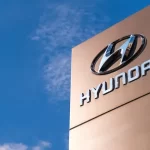A fascinating “ring of fire” solar eclipse is set to occur on October 2, 2024, as the Moon passes between the Earth and the Sun at its farthest point. This celestial event, known as an annular solar eclipse, will not be visible in India but can be observed in parts of South America and other regions. As always, proper eye protection is crucial to avoid damage while viewing the eclipse.
According to NASA, “On October 2, 2024, the Moon will pass in front of the Sun, casting its shadow across parts of Earth.” This eclipse is called a “ring of fire” because the Moon, being at its farthest point from Earth, appears smaller than the Sun and doesn’t completely cover it. The result is a spectacular ring-like appearance around the Moon.
Date and Time of the Eclipse
For those wondering about the timing, the solar eclipse will begin at 9:12 PM Indian Standard Time (IST) and will end around 3:17 AM IST the following day. However, it is important to note that this eclipse will not be visible in India.
In 2024, there will be two solar eclipses:
- April 8, 2024 – Total Solar Eclipse
This eclipse will be visible across parts of North America, including the United States, Mexico, and Canada. A total solar eclipse occurs when the Moon completely covers the Sun, casting a shadow on Earth and turning day into night for a brief period. Major cities like Dallas, Indianapolis, Cleveland, and Buffalo lie in the path of totality, providing an excellent viewing opportunity. - October 2, 2024 – Annular Solar Eclipse
This eclipse will be visible in parts of South America, including Chile and Argentina. An annular solar eclipse occurs when the Moon is slightly farther from Earth and doesn’t completely cover the Sun, creating a “ring of fire” effect around the Moon.
In India, neither of these eclipses will be visible. However, solar eclipses are still significant astronomical events that are often observed globally through live streams and scientific platforms.
Where Will the Solar Eclipse Be Visible?
According to NASA, the annular solar eclipse will be visible in parts of South America, particularly Argentina and Chile. Additionally, a partial solar eclipse will be observable in regions including Antarctica, North America, and the Pacific Ocean, as well as places like Brazil, Uruguay, and Hawaii. Unfortunately, India will miss out on this unique event.
Viewing Safety
Even if the eclipse is not visible in your location, it’s crucial to remember that staring at the Sun at any time without proper protection can cause permanent eye damage. Solar eclipses, whether total or partial, require special precautions to view safely. Always use certified eclipse glasses or solar filters, and never look directly at the Sun without protection. When the eclipse is not visible, regular solar viewing glasses may not be necessary, but caution is always advised.
A Fast-Moving Phenomenon
Space experts have also highlighted the incredible speed of the Moon’s shadow during this eclipse. Depending on your location, the shadow can travel as fast as 10 million km/h (6 million mph), or in other places, it may slow down to 2,057 km/h (1,278 mph), roughly the speed of a fighter jet.
Though the eclipse won’t be visible in India, it remains a remarkable astronomical event that will captivate observers in various parts of the world.

























